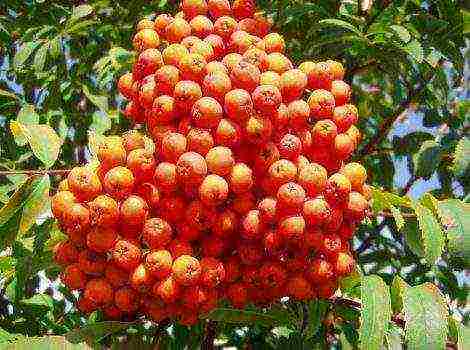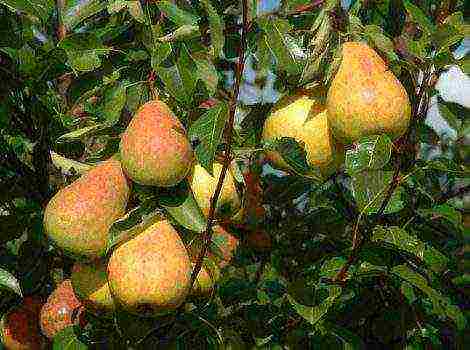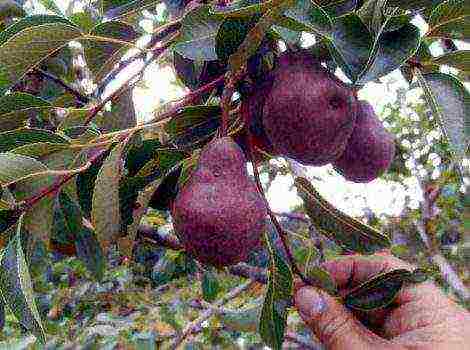Content
Detailed description of the sweet cherry variety Bull heart
There are sweet cherries in every garden, so each owner chooses for himself those varieties that he likes best. If you are interested in tasty, aromatic and large berries, then a cherry bovine heart is a good option. That is why it is worth talking about this variety in as much detail as possible, the description and characteristics of which are given below.
Description of sweet cherries of the Bull Heart variety
The trees are medium-sized, the crown is pyramidal, compressed, of medium density. Shoots are straight and even, light brown in color. Inflorescences for two or three flowers. The leaves are large, rich green.
Fruit ripening occurs approximately in the first half of June. Moreover, gardeners are advised to harvest immediately. Since long-term presence of cherries on the tree can lead to cracks in the berries.
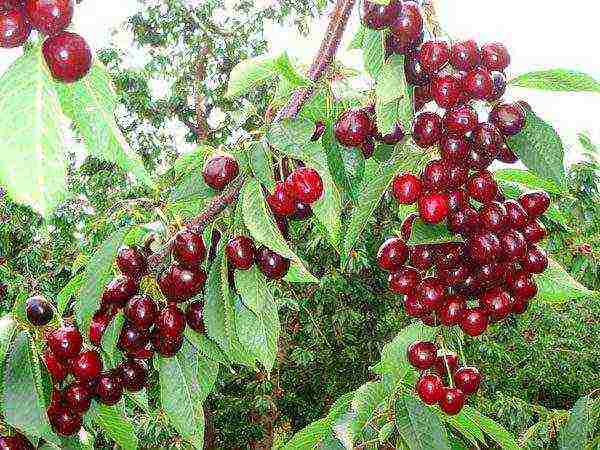
Immediately after planting, the tree develops and grows rapidly. By the age of 4-5, it begins to bear fruit and slows down somewhat its growth.
The variety is frost-resistant. She normally tolerates winter with a temperature - 20 degrees Celsius. In this case, the fruit buds and the wood itself will have nothing. If the readings on the thermometer fall significantly below - 20 degrees, the tree may get stressed and not bear fruit for one year. That is why in places with harsh winters, you should not plant a bull's heart.
Many cherries that are grown in Russia do not have the ability to self-pollinate. Among them is the Bullheart. Therefore, in order to obtain a full-fledged harvest, several trees must be planted in one place at once, otherwise the tree will give a very small percentage of ovaries, usually no more than 10%. Pollinators for each other can be different varieties, but it is necessary that the dates when they bloom coincide.
Fruit characteristics
The fruits are large and beautiful. The average weight of one berry is 7-8 grams. In form, as the name implies, cherries resemble the heart of a bull. The skin is smooth and shiny. When the berry ripens, it takes on a crimson-red color, almost black.
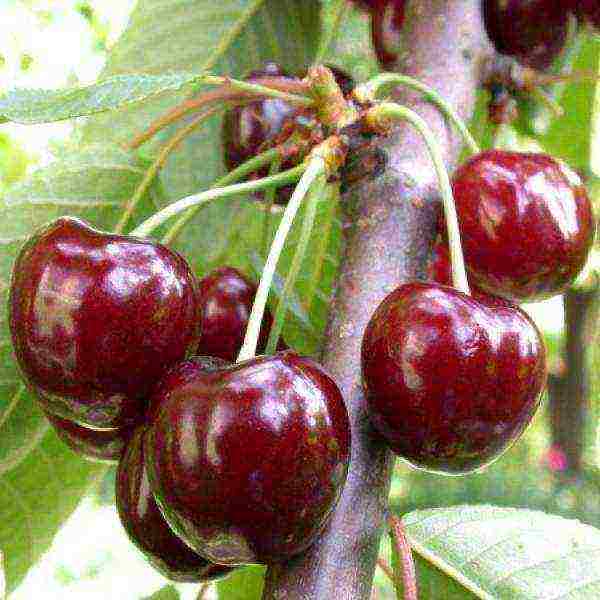
The pulp is dark red, dense, juicy and rich in taste. If we evaluate the taste of the berry - definitely five with a plus.
Advantages and disadvantages
Any variety has its own advantages and disadvantages. Let's consider them in more detail later in the article.
Positive qualities of a bovine heart cherry:
- high steadiness to various kinds of diseases;
- lovely taste qualities;
- the ability to eat fresh, as well preserve in the form of compote, juice, jam or jam;
- high resistance to low temperatures and frost;
- good yield of the variety.
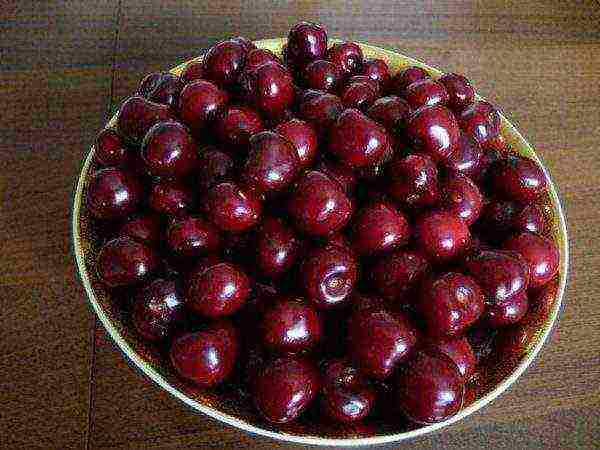
Negative qualities of the variety:
- low transportability;
- after harvest deteriorate quickly, so they should be recycled right away;
- under certain weather conditions berries may crack, for example, if long-lasting wet weather gives way to dry and hot gusts of wind.
Since the fruits themselves are large and juicy, they are poorly stored even in the refrigerator. Such berries must be constantly monitored so that they do not deteriorate. Better yet, pick cherries if necessary and process them right away.
Planting and leaving
Sweet cherry is highly resistant to temperature drop, therefore it can be planted in spring and autumn. Still, spring should be preferred. After all, this will allow the tree to take root well in a new place in favorable conditions.
When choosing a place for planting a seedling, it is worth remembering that cherries love light and warmth, and do not tolerate drafts well. Therefore, the south side of the land is the best option.

The soil must be fertile and moisture-permeable. In order not to damage the root system of the seedling, the wastewater should be deeper than 1.5 m from the surface of the earth. For this variety, loamy and sandy loam soil is best suited. If the land is swampy, planting a tree is not worth it.
It is recommended to plant seedlings no closer than three meters apart. Whereas the spacing between the rows should be about five meters.
You need to bury the seedling gradually, shaking it several times to fill the hole well with soil. Make sure that the root collar remains on the surface. At the same time, a garter stake is installed.
At the final stage of planting a tree, it is recommended to water it abundantly with at least three buckets of water.
Growing conditions
Sweet cherry Bull heart prefers a humid environment, so special attention is paid to watering the tree. It should be abundant, but not frequent. Once a month is enough. For a newly planted plant, there are three buckets of water, for a mature one - six.
It is necessary to water the tree for the entire growing season of its growth, from the appearance of the first greenery and the fall of the last leaf. At the same time, special attention is paid to autumn watering, since the plant needs to stock up on moisture for the whole winter.
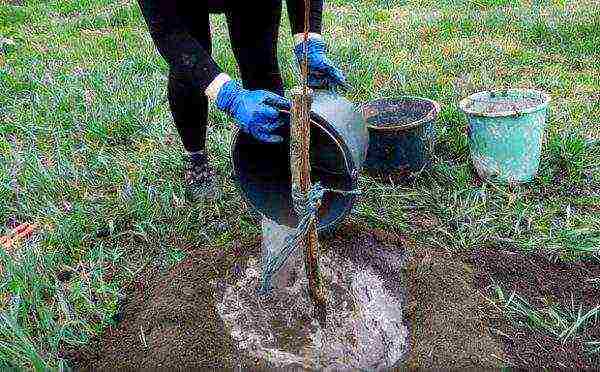
After planting, the seedling does not need feeding, it has enough fertilizer, which was used immediately. Whereas in subsequent years it is recommended to use humus previously diluted in water.
It is recommended to use superphosphates and nitrate as mineral fertilizers. Their introduction should be carried out in extremely small doses and at significant time intervals.
Fruit ripening occurs in the middle: under favorable conditions, this is mid-June, in other cases, mid-July. Cherries need a lot of light and warmth for the fruits to ripen well and acquire their attractive appearance and good taste.
Features of the variety
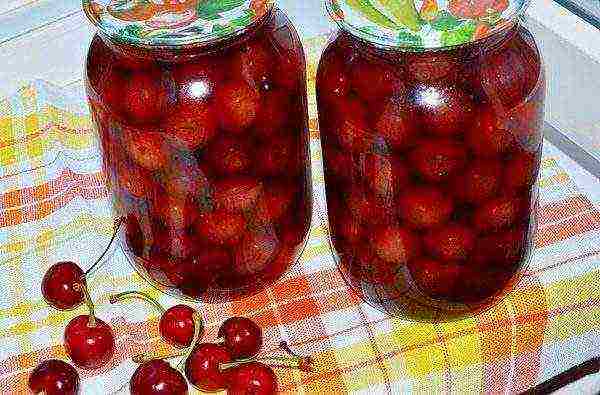
- berries are heart-shaped, why the name of the variety came from;
- you can eat fresh berries. They are very juicy and delicious. But the fruit also lends itself well to canning. After heat treatment, cherries acquire a dark red hue;
- cherries allows you to harvest large berries... Moreover, there is a certain pattern: the better the soil, the larger the fruits.
Diseases and pests
The bovine heart variety is highly resistant to various kinds of diseases. To protect young seedlings from rodents, it is recommended to wrap its trunk with burlap. Plus, this will allow the plant to warm up for the winter. You can protect yourself from rodent attacks in the following ways:
- scatter poison from rodents around;
- tie the trunk with spruce branches;
- tie the trunk of the seedling with roofing material.

Bovine heart cherries are especially popular.Because its fruits are large, tasty and aromatic. Caring for seedlings is not difficult. But here there is a problem with the safety of the berries after they are picked, they need to be recycled immediately. Therefore, it is worth evaluating all the pros and cons before growing such trees.
